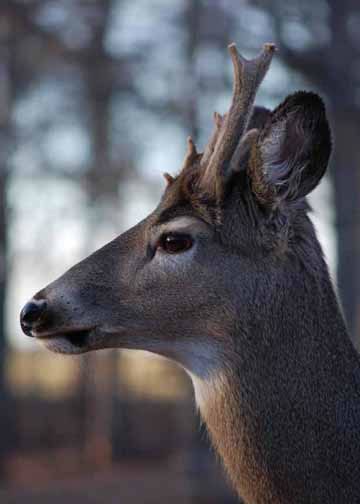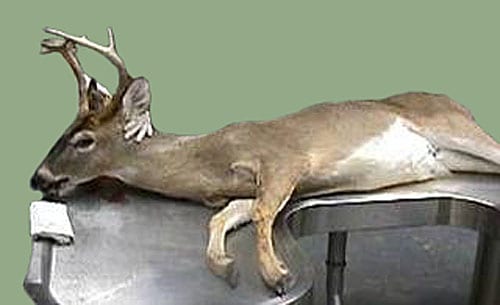I was 13 when I found out some female deer have antlers. That day, I was tagging along with my uncle on a deer hunt on family property in Vermont. With a stick of pepperoni in my pocket and a belly full of wheat pancakes, I was daydreaming and didn’t see my uncle’s friend suddenly stop and raise his rifle. The surprise blast of his .243 was just the first shock of the day.
Until that moment, trailing behind adult deer hunters was boring. It was full of rules: Stay behind us. Walk quieter. Your hands are flags to a deer’s eyes; stop waving them around. As the two adults examined the deer, things certainly didn’t improve. The deer took a few minutes to die and did its best to convince me I should have stayed home.
I looked away when the knives came out and stared off into the woods. I only turned around when my uncle swore and told his buddy, ”You shot a doe with antlers.” Well, I thought we were about to become famous. I was probably going to get my picture in the paper and be on the t.v. News. But the reaction of the two adults was a mixture of confusion and disbelief. Neither man wanted anything further to do with that doe. It was left for the coyotes to eat.

Why do some female deer have antlers?
Female deer with antlers are actually hermaphrodites or pseudohermaphrodites. Hermaphrodites have a genetic irregularity resulting in possessing both male and female sex organs. Pseudohermaphrodites have matching chromosomal and ovary or testis tissue but mismatching external genitalia.
Hermaphrodite deer, like does with antlers, maybe males with reproductive anomalies, females, or even part female.
If that’s confusing, wait until you learn about pseudohermaphroditism.
Pseudohermaphroditism comes to deer in two forms; female and male. Female pseudohermaphroditism results in a deer with ovaries and testicles. Male pseudohermaphroditism results in deer with antlers and external genitalia of a female deer.
A case of a male pseudohermaphrodite was noted in The Journal of Wildlife Diseases.
“A male pseudohermaphrodite white-tailed deer (Odocoileus virginianus) is described. The animal shot in Aiken County, South Carolina on November 4, 1971, was 1.5 years old and had the external appearance of an antlered doe.”
Related: How to score a buck and measure a rack.

The photo above comes from MISSISSIPPI STATE UNIVERSITY – DEER ECOLOGY & MANAGEMENT LAB. The identification and confirmation was made by Steve Demarais, of the MSU Deer Lab co-director and the Taylor Chair in Applied Big Game Research and Instruction.
How to identify female deer with antlers.
Taking your time when identifying your target can keep you from accidentally taking a female deer with antlers. Here are a few tips to help you identify an antlered doe.
- The small rack consists of button antlers, spikes, or just velvet-clad pedicles.
- The antlers are still in velvet late into the fall.
- The ”buck” has an unusually scrawny neck.
- The deer travels with other does or yearlings when other bucks have already begun rubbing and other pre-rut behavior.
- It’s nursing a fawn (sorry, but I had to throw that in).
Related: What do bucks snorts and tail flagging mean?
Why your tag is for antlered and antler-less deer.
In the field, we all eventually encounter a buck with antlers that are too small to allow for legal harvesting. But if you take a doe with antlers legally long enough to harvest, simply use your antlered deer tag and collect your harvest.
There’s no legal reason to worry, and the game warden won’t be coming after you with a handful of citations. Things may be different, however, if you post a picture or brag online about your trophy. You’ll end up in dozens of articles, all of which will point out that you didn’t take an antlered doe. All of them will be at least as dull as this article, and most will be filled with 20-letter scientific words no one understands.
Related: What are deer warts?

